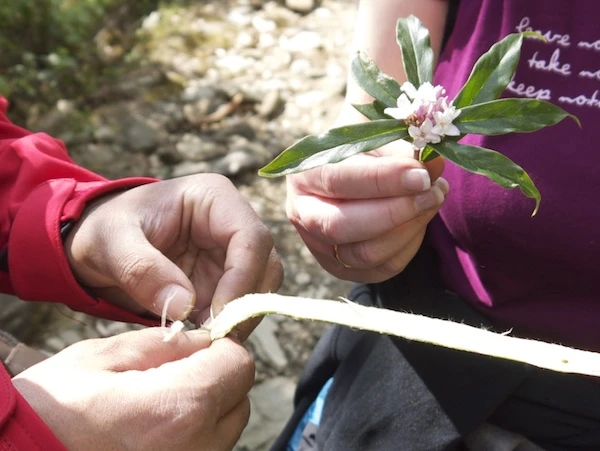
Lokta Paper is made from the bast, the fibers that grow around some stem centers, of evergreen shrubs that share the same name. Lokta bushes grow on the southern slopes of the Himalayan mountains between elevations of 5,250 feet and 13,000 feet. The paper is long-lasting and exceptionally strong, and the handmade paper is also resistant to bugs, humidity, and mildew. Because of its resistant properties, lokta paper was traditionally used for important religious or government documents.

To make the paper harvesters strip away the inner bark. Lokta bark is a fully sustainable resource because of the way the bast is collected; harvesters strip away the inner fibers but leave the root system entirely intact so the plant can grow back. The bast is then boiled for eight hours to soften and break down the fibers, then it is sifted and pulped into a paste. Then the fibers are added to a frame and evenly distributed to thicknesses anywhere from 5gsm to 120gsm. For reference, printer paper is around 90gsm. The paper is then drained, dried in the sun, and removed from the frame. The lokta may now be dyed or printed before being sold to consumers. It is not uncommon to see Batik paper, or paper that has wax added to the paper before dying to preserve the colors underneath, on lokta paper.
The majority of the papers in Handmade Paper in Nepal are 100% lokta, but some samples include pineapple leaves, banana fibers, cotton rag, waste paper, wild mitsumata, and Shifu.
Lokta paper has been produced in the rural Nepalese foothills since the twelfth century—most notably in the Baglung district—but is now made in at least 16 different districts in Nepal. Approximately 70% of all handmade paper in Nepal uses some amount of lokta fibers. Many Nepalese paper producers usually hire large numbers of women and poor community members without consideration for caste, gender, or ethnicity.